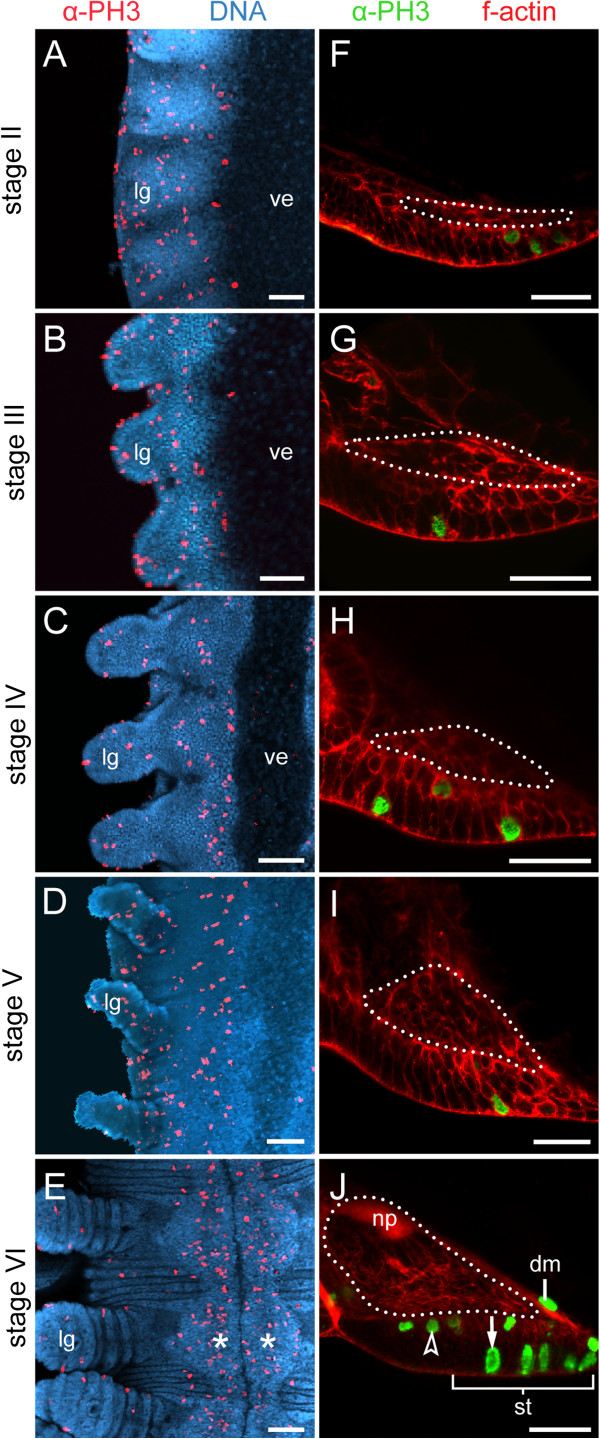Figure 5.
Cell division pattern during the development of ectodermal thickenings. Confocal laser-scanning micrographs. Embryos of Euperipatoides rowelli (Peripatopsidae) at successive developmental stages. (A–E) Cell divisions along the ventral body surface in embryos double-labelled with a DNA marker (Bisbenzimide; blue) and an anti-phospho-histone H3 antibody (red). Anterior is up. Note that cell divisions mainly occur within the segmental thickenings (=anlagen of the ventral and preventral organs) at stage VI (in E), whereas they occur in a random fashion along the body before this stage (A–D). Note also that there are only a few dividing cells in the extraembryonic tissue. Asterisks (in E) indicate paired segmental thickenings. (F–J) Cross sections of embryos at corresponding stages double-labelled with phalloidin-rhodamine (f-actin; red) and an anti-phospho-histone H3 antibody (green). Note that the establishment of the nerve cord (dotted line) precedes the formation of segmental thickenings. Note also that the immigrated dividing neural progenitor cells (arrowhead in J) differ in shape and size from superficial dividing cells in the segmental thickening (arrow in J). Abbreviations: dm, dividing mesodermal cell; lg, leg anlage; np, nerve cord neuropil; st, segmental thickening (=anlage or the ventral and preventral organs); ve, ventral extraembryonic tissue. Scale bars: 100 μm (A–E), and 50 μm (F–J).

